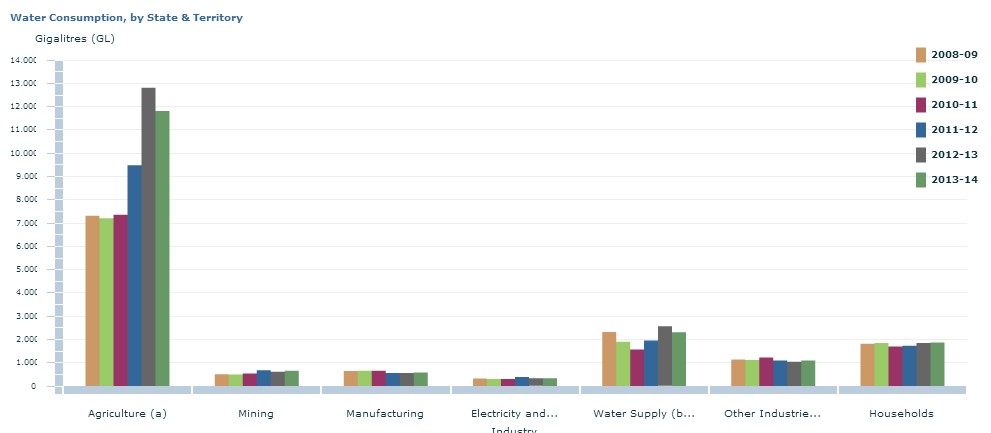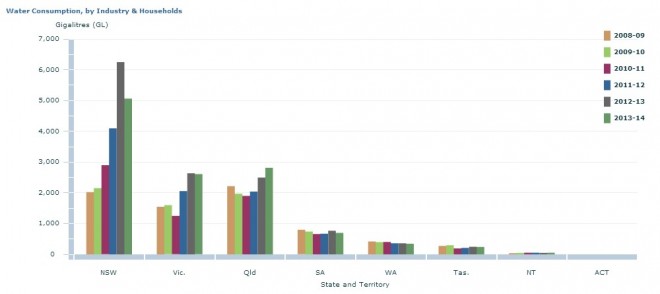Yesterday, the ABS released its annual Water Account for 2013-14, which revealed that average yearly household expenditure on water rose 12 per cent to $584 per household in 2013-14, despite only a 1% increase in water use:
“In 2013-14 Australian households spent more than $5 billion dollars on water, paying an average of $3.08 per thousand litres. New South Wales and Victoria experienced the highest increases in household water prices, up by 27 per cent and 24 per cent respectively. South Australian householders paid the most in Australia at an average of $4.29 per thousand litres,” said Mark Lound from the ABS.
As in previous years, the agriculture industry was the largest consumer of water in Australia. Compared to 2012-13, usage was down 8 per cent to just over 11,500 gigalitres:
“Agricultural water use represents 62 per cent of Australia’s total water consumption, with most being used in irrigation. The agricultural activity that used the most water in 2013-14 was cotton growing, at 17 per cent of Australia’s total water consumption.” said Mr Lound.
The below charts summarise the water use situation by state and territory:


As reported in Fairfax, the rise in water costs are primarily due to the building of desalination plants in part to cope with the growing demands from a rising population:
Former chair of the now-defunct National Water Commission, Karlene Maywald, said the price rises were largely due to efforts to secure water supplies.
“As a consequence of the last drought there is a lot more infrastructure being built to provide greater water security,” she said.
“While people might be consuming less water, which is a very good thing, the pipes, the pumps, the dams, the desalination plants, are still there and still need to be paid for.
“[And] as our cities grow there’s a need for more water, and that puts pressure on the delivery of infrastructure.”
In its final report, the National Water Commission said Australia’s population is predicted to grow by an extra 21.5 million in the next 50 years and further urban water reform was needed…
Chalk this up as another cost related to the population ponzi.

